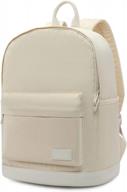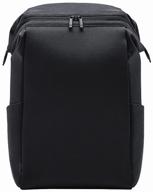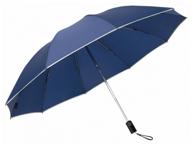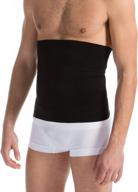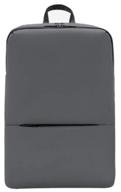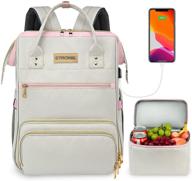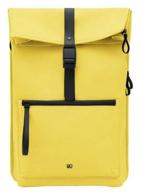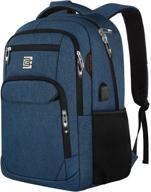How to pack the RIVACASE 8365 backpack for travel?
The RIVACASE 8365 backpack is a great choice for travel thanks to its large capacity and multiple compartments. Here are some tips for packing it efficiently:
Assess your packing needs
First, consider what you need to pack and for how long you'll be traveling. The 8365 has a capacity of 30 liters, so it can hold clothing and gear for short 1-3 day trips or lightweight packing for longer journeys.
Use packing cubes
Invest in some packing cubes or foldable organizer bags to optimize the space. For example:
- Medium cube for tops
- Medium cube for bottoms
- Small cube for underwear and socks
- Slim folder for documents
Packing this way keeps items compact and accessible.
Pack heavier items closer to back
Keep heavier items like toiletries against the back padding for better weight distribution.
Use all the compartments
The 8365 has a large main compartment, front pocket, and tablet sleeve. Use them to segregate items:
- Main: Clothing, shoes, travel pillow
- Front pocket: Snacks, chargers, wallet
- Tablet sleeve: iPad, e-reader, documents
This organization keeps the pack tidy so you can find things easily.
Compress bulky items
For bulkier items like sweaters and jackets, use compression sacks or packing cubes to flatten them out. This frees up more room.
With some planning, the versatile RIVACASE 8365 backpack can hold everything you need for a organized, stress-free trip.
Another interesting products
How to clean the RIVACASE 8365 backpack?
It's important to clean your RIVACASE 8365 backpack regularly to keep it looking new. Here's a simple cleaning guide:
Empty out the backpack
First, empty out all contents from the main compartment, front pocket, and tablet sleeve.
Check the care instructions
The 8365 is made from polyester fabric. Check the tag to see the manufacturer's cleaning recommendations.
Wipe down exterior
Use a microfiber cloth dampened with warm water to wipe away dirt and grime from the exterior. Pay attention to high-touch areas like straps and handles.
Spot clean stains
- For ink or grease stains, use a cloth with a bit of isopropyl alcohol and gently rub the stain.
- For mud or dirt, let it dry first then brush off.
- For food or drink stains, use a mild soap and warm water.
Sanitize the interior
Dip a clean microfiber cloth in a non-bleach sanitizing spray made for fabrics. Gently wipe the interior surfaces to kill germs and odors.
Air dry
Hang or lay flat to air dry completely. Don't machine dry.
Freshen with baking soda
For odors, leave a small dish of baking soda in the bag zipped up overnight, then empty it out.
With proper care, your RIVACASE backpack can handle all your adventures while staying fresh and clean.
How to organize the RIVACASE 8365 backpack?
The RIVACASE 8365 backpack has plenty of space and pockets to organize your essentials. Follow these tips to keep it optimized:
Use packing cubes
Packing cubes or folders help compartmentalize items in the main compartment. For example:
- Medium cube: Clothing
- Slim cube: Undergarments
- Slim folder: Documents
Separate by category
Use the different pockets to group similar items together:
- Main pocket: Clothes, shoes, lunch box
- Front pocket: Tech accessories like chargers, adapters, external battery
- Tablet sleeve: Tablet, e-reader, notebooks
Use organizational inserts
Add removable pouches to keep small items in place, like:
- Toiletry kit
- Pen case
- Jewelry roll
Pack heavier items closer to back
Keep heavier items like books pressed against the back padding so weight is distributed comfortably when worn.
Utilize vertical space
Use the tall height of the backpack to slot in tall and slender items like umbrellas or water bottles.
Compress bulky items
Use compression sacks or packing cubes to flatten out bulky sweaters, jackets and other items.
With some organization, the RIVACASE 8365 backpack will neatly carry all your daily or travel essentials.
How to carry the RIVACASE 8365 backpack comfortably?
The RIVACASE 8365 backpack is designed for comfort during wear. Here are tips for getting the best fit:
Adjust the shoulder straps
Loosen the straps and lift the pack onto your back. The waist belt should sit just above your hips. Then:
- Tighten the shoulder straps until the pack fits snugly against your back.
- The straps should curve cleanly over shoulders without cutting in.
- About two fingers' width of extra space is ideal.
Use the sternum strap
Clip the sternum strap across your upper chest to stabilize the shoulder straps. Adjust it to sit at a comfortable level.
Cinch the waist belt
Pull the waist belt straps to cinch the pack around your hips. This transfers weight onto the hips instead of shoulders.
Pack weight appropriately
Ideally, keep load under 15% of your body weight. Pack heaviest items closest to your back and center in the main compartment.
| Body weight | Recommended load |
|---|---|
| 120 lbs | 18 lbs |
| 150 lbs | 22 lbs |
| 180 lbs | 27 lbs |
Adjust fit as needed
Take breaks to adjust straps and positioning. Re-tighten straps and lift pack higher if shoulders feel strained.
With some adjustments, the padded 8365 backpack will distribute weight comfortably for hassle-free wear.
Similar products
How to store the RIVACASE 8365 backpack when not in use?
Properly storing your RIVACASE 8365 backpack when you're not using it will help keep it protected and extend its life. Here are some tips:
Empty out the backpack
Remove all contents from the main compartment, front pocket, side pockets and laptop sleeve so it's completely empty.
Clean and dry it
Before storage, give the backpack a thorough cleaning and make sure it's completely dry. Allow it to air dry fully after cleaning.
Stuff with tissue paper
To help the backpack retain its shape, stuff it lightly with acid-free tissue paper.
Do not fold or compress
Avoid folding or tightly compressing the backpack, as this can damage the shape over time.
Store in breathable space
Keep the backpack in a well-ventilated, dry area away from direct sunlight and heat sources.
Use storage bag
For extra protection, store in a breathable cotton storage bag. Do not use a plastic bag which can trap moisture.
Hang on wall hook
Hanging upright on a sturdy wall hook helps maintain the backpack's structure.
Stuff with off-season items
In the off-season, fill it with items like summer clothes or accessories not currently in use.
With proper emptying, cleaning and storage practices, your RIVACASE backpack will be protected and ready for your next adventure.
How to maximize space in the RIVACASE 8365 backpack?
With a 30 liter capacity, the RIVACASE 8365 backpack provides ample space for gear. Follow these tips to utilize every inch:
Use packing cubes
Packing cubes compress clothes and optimize unused space in the main compartment. Categorize them by outfits or days.
Roll clothes vertically
Rolling clothes vertically instead of folding helps maximize fit in the packing cubes and main compartment.
Use organizational inserts
Use pouches and sleeves to store smaller items in unused spaces, like:
- Front mesh pockets: toiletries, medicines, charging cables
- Side pockets: umbrella, water bottle, snacks
Fill all the pockets
Ensure you utilize the front pocket, side pockets, and laptop sleeve for flatter items.
Wear bulky items
If packing bulky sweaters or jackets, wear them instead of packing them to save space.
Compress using straps
Use the side compression straps to cinch down bulky items like sleeping bags, compressing them further.
Consolidate toiletries
Save space by consolidating toiletries into travel-size and multi-use bottles.
With smart packing techniques, you can fit 1-2 weeks' worth of necessities into the RIVACASE 8365 backpack without it feeling cramped or disorganized.
How To Choose The Right Size Backpack For Your Laptop?
Choosing the right size backpack for your laptop can be a daunting task, but here are some tips to help you out:
What Are The Different Types Of Laptop Backpacks Available In The Market?
There are various types of laptop backpacks available in the market. Here are some of the most popular types:
These are just a few examples of the different types of laptop backpacks available in the market. When choosing a backpack, consider your needs, preferences, and budget to find the best one for you.
Top products in 🎒 Laptop Backpacks
What Are The Differences Between A Laptop Backpack And A Laptop Briefcase?
Laptop backpacks and laptop briefcases are two popular options for carrying laptops and other work essentials. Here are some differences between the two:
Laptop Backpacks:
Laptop Briefcases:
In summary, the choice between a laptop backpack and a laptop briefcase depends on personal preferences, needs, and the nature of the job. Backpacks are more practical, comfortable, and versatile, while briefcases are more formal and professional-looking.










